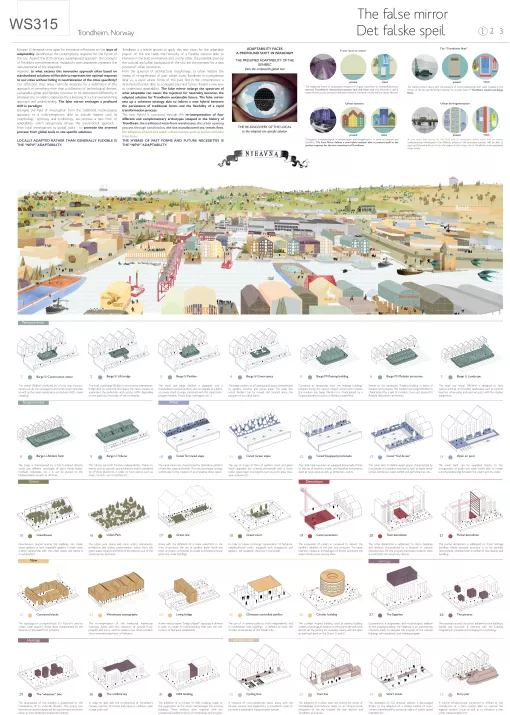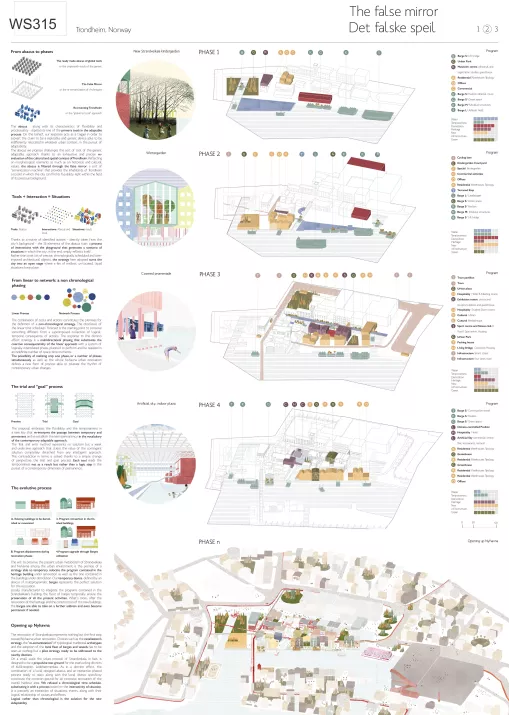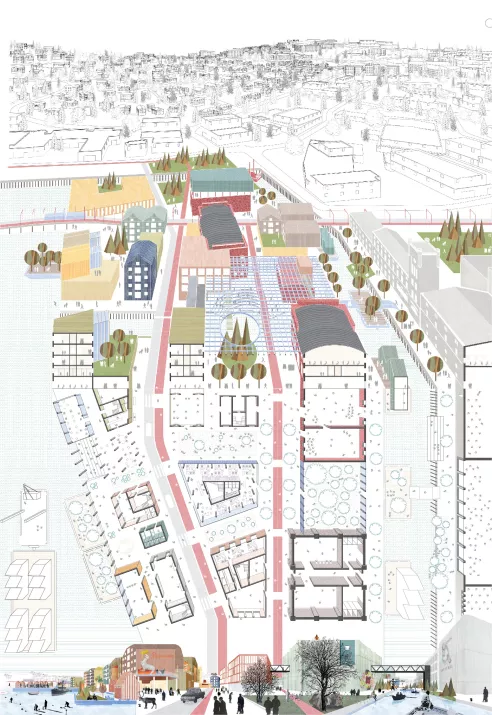Project:
The False Mirror

About
-
Europan 13 demands once again for innovative reflections on the issue of adaptability, identified as the contemporary response for the future of the city. Against the 20th century superimposed approach, the concepts of flexibility over permanence, multiplicity over uniqueness represent the new panorama of the adaptable.
However, to what extents this innovative approach often based on standardized solutions will be able to represent the optimal response to our cities without falling in neutralization of the cities specificity? Our reflection, thus, arises from the necessity for a redefinition of this approach, in something more than a collection of technological devices, sustainable glitter and flexible structure to be dislocated indifferently in whatever city. In order to radicalise the subversing of such an overwhelming approach and understanding, The false mirror envisages a profound shift in paradigm.
Enlarging the field of investigation from the traditional technological approach to a multi-perspective able to include matters such as morphology, typology and symbology, we propose a new form of adaptability, which categorically refuses the conventional approach – from local investigations to global tools – to promote the inverted process: from global tools to site specific solutions.
Trondheim is a fertile ground to apply this new vision for the adaptable project: on the one hand, the necessity of a flexible solution able to intervene in the built environment and, on the other, the potential given by the cultural and urban background of the city are the premises for a new process of urban conversion.
From the question of architectural morphology to urban matters the means of re-signification of past values turns Trondheim in a progressive déjà vu, a vision where forms of the past find in the contemporary a distorted reflection able to conjugate past and future. Toward a new way to understand adaptability, The false mirror enlarge the spectrum of what adaptable can mean: the rejection for neutrality becomes the adapted solution for Trondheim sustainable future. The false mirror sets up a coherent strategy able to inform a new hybrid between the persistence of traditional forms and the flexibility of a rapid transformation process.
This new hybrid is conceived through the re-interpretation of four different and complementary archetypes steeped in the history of Trondheim: the traditional waterfront warehouses, the urban opening process through canalization, the site manufactured sea vessels fleet, the adoption of land and water infrastructure such as ferries and new tram lines.
THE HYBRID OF PAST FORMS AND FUTURE NECESSITIES IS THE “NEW” ADAPTABILITY.
-
The authors respond to the Europan 13 theme “adaptable city” by proposing a new form of adaptability that is based on an analysis of the local morphology, typology and symbolism. In the project this is exemplified with a reinterpretation of what the project defines as four local “archetypes”: the warehouses, the canals, the sea vessels as well as specific land and water infrastructure.
The project reinterprets existing conditions in Trondheim in a rich and intelligent way. By introducing a canal on the site an island is created as a means to continue a “true” Trondheim identity with waterfront to all the edges of the site. This, as a consequence, allows access to the water for all. The heritage buildings and the beer centre are suddenly in the “front row” instead of in the second row, which creates a new logic in the urban layout where the East is as important as the West.
Another major consideration concerns the relocation of the major road, which currently divides the project site into two parts. By moving the road to the rear of the beer centre, the project enlarges the potential for stronger intra-site and city connections.
Beyond the urban scale, the project proposes interesting housing typologies, the refurbishment of heritage buildings and the smart use of local fleets for temporary uses such as the temporary relocation of stakeholders on site. The jury believes this project and the accompanying toolbox is an exciting new plan for Standveikaia – a plan that will work with time and against the generic city.
-
Team Representative: Giovanni Glorialanza (IT) – architect; Associates: Andrea Anselmo (IT), Gloria Castellini (IT), Guya Di Bella (IT), FiIlippo Fanciotti (IT), Boris Hamzeian (IT) – architects
False Mirror Office, Mura della Malapaga 7/2, 16128 Genova – Italia
+39 39 2361 1107 – falsemirroroffice@gmail.com – falsemirroroffice.com
A. Anselmo, G. Castellini, F. Fanciotti, G. Glorialanza, G. Di Bella & B. Hamzeian
Team interview
1. How did you form the team for the competition?
Our team is the result of a professional joint venture of six architects willing to combine their different experiences in international firms with a common academic background at the Polytechnic School of Genoa (IT).
As a response to a theoretical common ground built on matters of morphology, form and representation on the different scales of the architectural project, False Mirror Office aims at challenging some of the most distinctive paradigms of the contemporary city and the present state of Architecture’s production.
We elected Europan as our test ground to investigate the contemporary ambiguity and exhausted consumption hidden behind concepts such as adaptability, tradition and sustainability.
2. How do you define the main issue of your project, and how did you answer on this session main topic: Adaptability through Self-Organization, Sharing and/or Project (Process)?
The adaptable city is too often conceived as nothing but an unexpected collision of technological devices, a constant glitter of green sustainibilism, harbinger of an increasing amount of flexible and displaceable –and yet anonymous– structures.
Willing to challenge such a harmful step toward the generic city, our aim is to challenge such an interpretative perspective, giving a new meaning to Adaptability with a radical redefinition of its premises. Through a radical shift in paradigm, we envision a new way of conceiving the adaptable that refuses the conventional approach –from local investigation to global tool– and promotes the inverted process: from global tools to specific solutions.
Locally adapted rather than generically flexible is the new Adaptability.
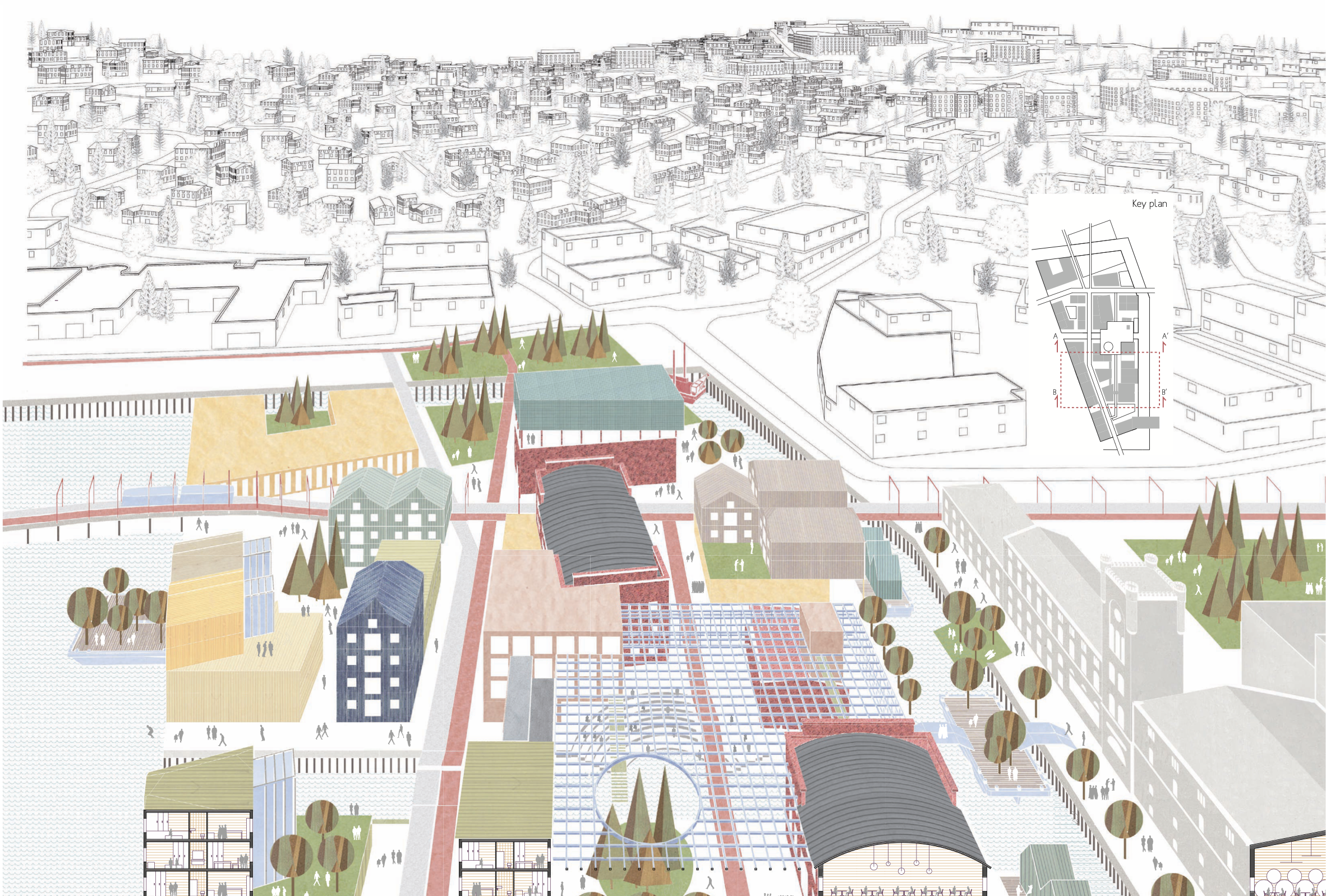
3. How did this issue and the questions raised by the site mutation meet?
The case study of Trondheim along with its unique milieu of tradition and innovation reveals itself as a perfect testing ground for such a paradigmatic subversion of the Adaptable.
Through an investigative perspective addressed to matters of morphology, symbolism and social demands, The False Mirror acts on the district of Strandveikaia into a progressive déjà-vu. Along with a theoretical machine of semantic re-signification we defined an urban vision able to build up a new scenario where past and future forms turn their traditional antagonism into a hybrid playground: the form of the past with the needs of the future.
Starting from such a theoretical perspective we came closer to the urban permanencies of the city proposing a significant reinterpretation of four archetypes deeply rooted in the history of Trondheim: the traditional and well-known warehouse on the Nidelva, the continuous land-water dialogue made of landfill and canal, the site manufactured vessel and barge fleet and the development of new land/water infrastructure in the urban tissue.
The hybrid of past forms and future necessities is the new Adaptability.

4. Have you treated this issue previously? What were the reference projects that inspired yours?
Against the urban clichés of the contemporary societies, our proposed shift in paradigm for Adaptability is just a piece of our investigation against concepts such as the sustainable green wave or the postmodern banalisation of the past. While trying to subvert the contemporary interpretation of such matters, we ignite a machine of doubt, a critical engine able to process reality toward new hybrid productions. Every project we looked at for inspiration renders Adaptability as the last expression of the generic: such architectural references have consequently become the primary antithesis to challenge and subvert. We quickly realized that the only reference yet capable of producing a new reality for Trondheim is Trondheim itself.
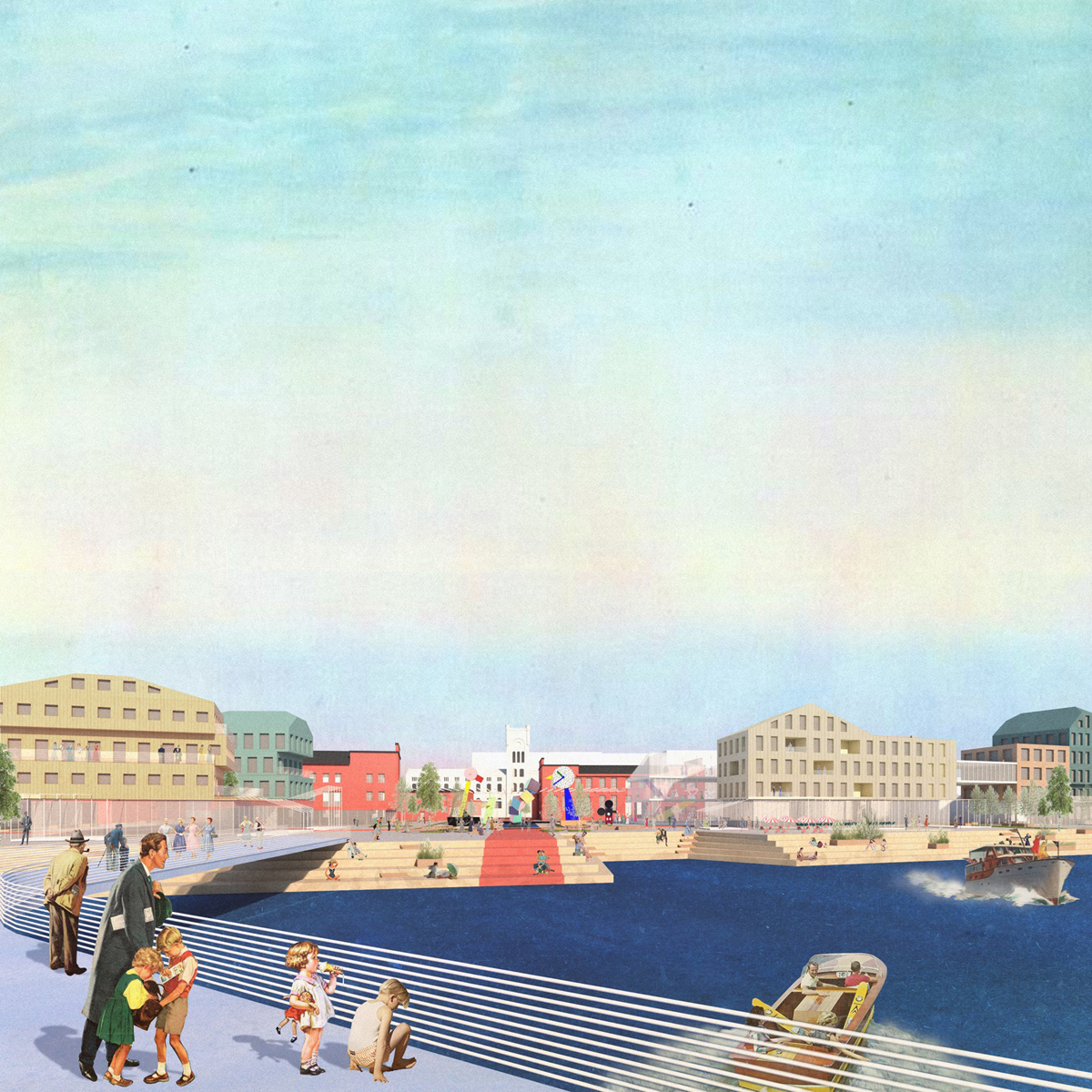
5. Today –at the era of economic crisis and sustainability– the urban-architectural project should reconsider its production method in time; how did you integrate this issue in your project?
The contemporary lack of time and economical stability gives us the opportunity to raise programmatic phasing to a higher level. It is anachronistic to still consider the architectural process as a static progression of events and consequential steps. Starting from such a premise, we propose a subversion from the chronological phasing to an interactive process based on interaction, logic and proximity. The False Mirror proposes a new schedule of processes founded on different possible scenarios, triggered by their mutual interaction. The concept of a unique starting point and a mandatory completion date disappears, giving space to a playground of events and situations linked by the new concepts of cause and effects.
Logical rather than chronological is the new phasing for Adaptability.
6. Is it the first time you have been awarded a prize at Europan? How could this help you in your professional career?
Considering the different experiences of each member of the team, this is not our first encounter with the Europan competition. Some of us already achieved three prizes with different teams for Europan 12 (one runner-up and two special mentions).
Still this is the first time we achieve the first prize: such a chance represents an unique occasion to turn a fortunate result into the basis of further professional collaborations as well as an effective opportunity of turning a concept into reality.
Europan is an important way to be introduced to a factual process based on an intense interaction among different subjects (public and private clients, municipalities, etc.) We are looking forward to making the next step of such a compelling project.
Related projects
-
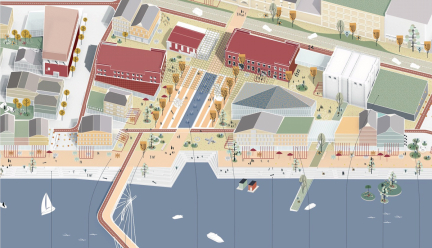
The False Mirror
The false mirror sets up a coherent strategy able to inform a new hybrid between the persistence of…
-
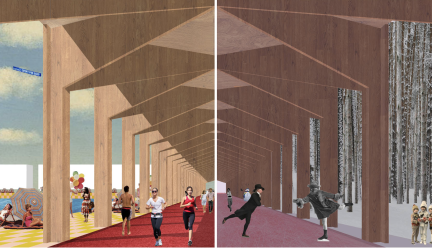
The Rim
The development of Strandveikaia adapts to the growth of the whole Nyhavna, constituting a…
-

More Trondheim!
For a fair, inclusive and lively urbanity, towards the post neoliberal city!
